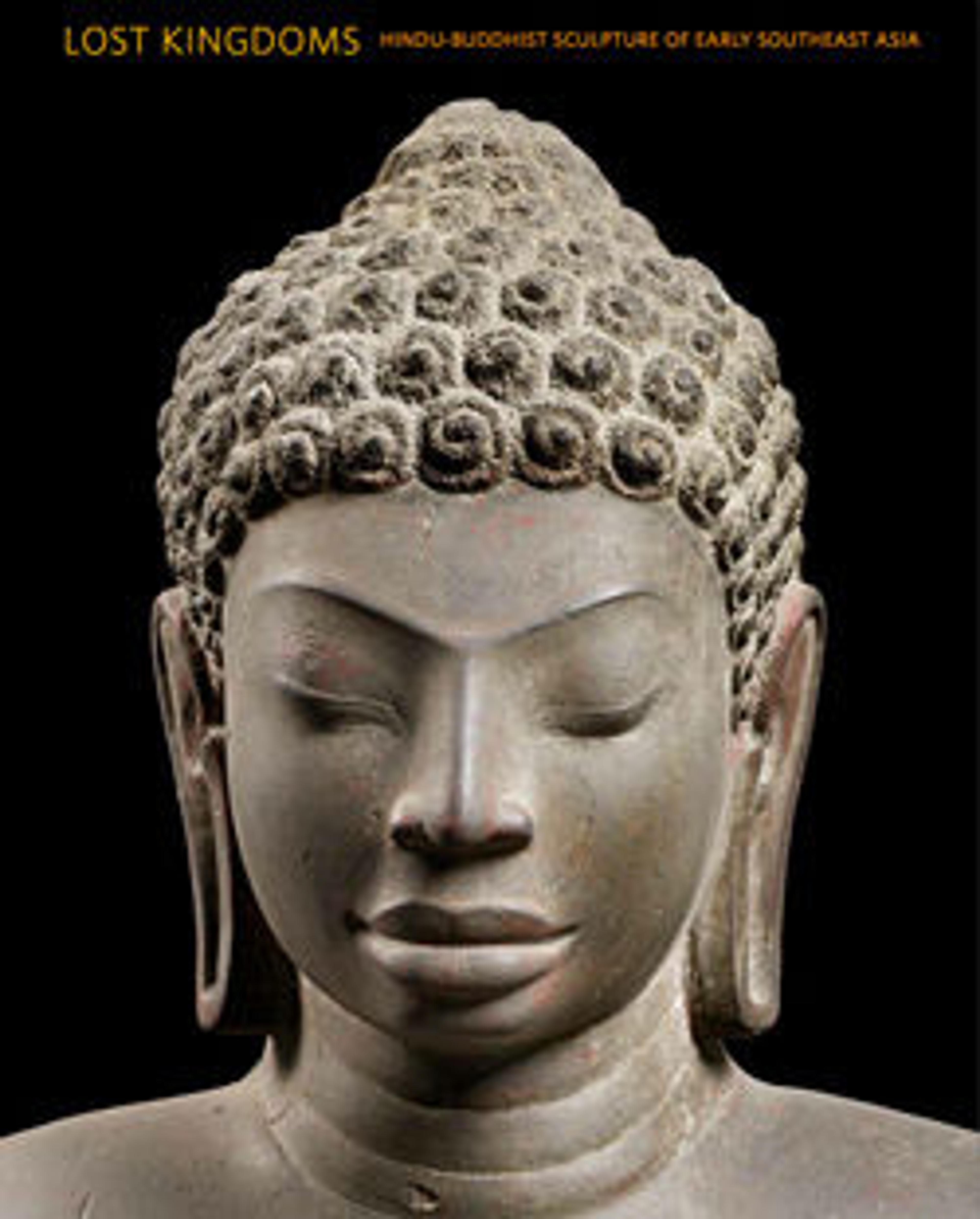Standing Buddha
Considerable innovations in religious iconography were developed during the Mon-Dvaravati period. For example, many Buddhas hold both of their hands in a gesture of exposition or teaching (vitarkamudra) that in India is confined to the right hand. Images from the related site of Prakhon Chai also exhibit this double hand gesture, but otherwise it is unknown in the Buddhist world. Another iconographic innovation was to place a standing Buddha and flanking attendants on the back of Garuda, a semidivine winged creature that usually appears as the vehicle (vahana) of Vishnu.
Artwork Details
- Title:Standing Buddha
- Period:Mon-Dvaravati period
- Date:8th–9th century
- Culture:Thailand (Nakhon Pathom Province)
- Medium:Bronze with traces of gilt
- Dimensions:H. 27 in. (68.6 cm); W. 10 1/4 in. (26 cm); D. 5 3/8 in. (13.7 cm)
- Classification:Sculpture
- Credit Line:Fletcher Fund, 1959
- Object Number:59.149
- Curatorial Department: Asian Art
More Artwork
Research Resources
The Met provides unparalleled resources for research and welcomes an international community of students and scholars. The Met's Open Access API is where creators and researchers can connect to the The Met collection. Open Access data and public domain images are available for unrestricted commercial and noncommercial use without permission or fee.
To request images under copyright and other restrictions, please use this Image Request form.
Feedback
We continue to research and examine historical and cultural context for objects in The Met collection. If you have comments or questions about this object record, please contact us using the form below. The Museum looks forward to receiving your comments.
